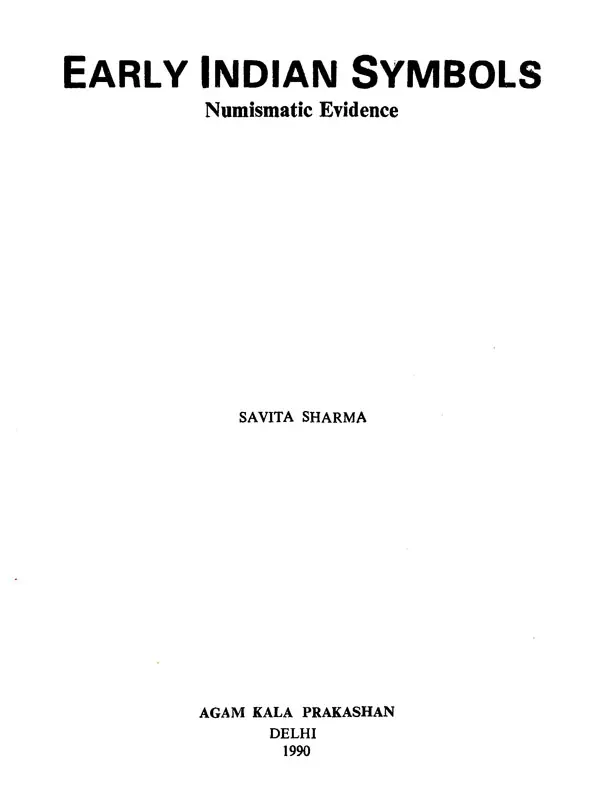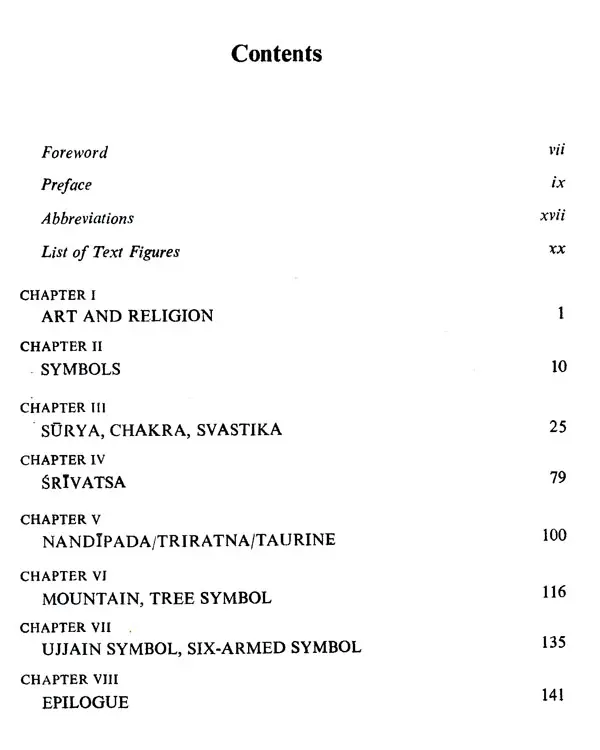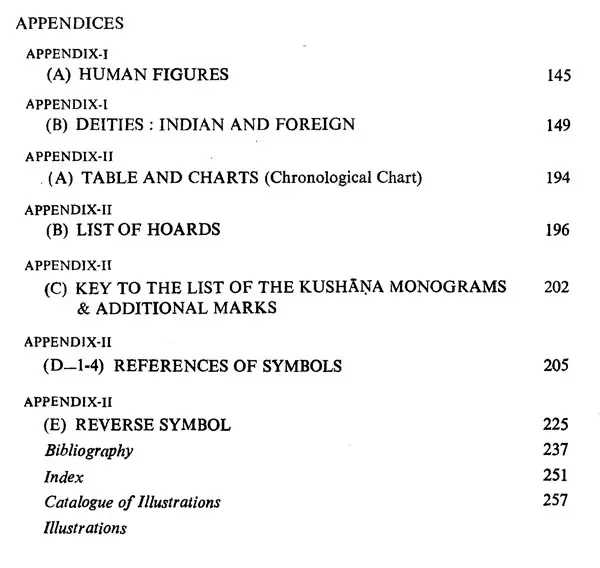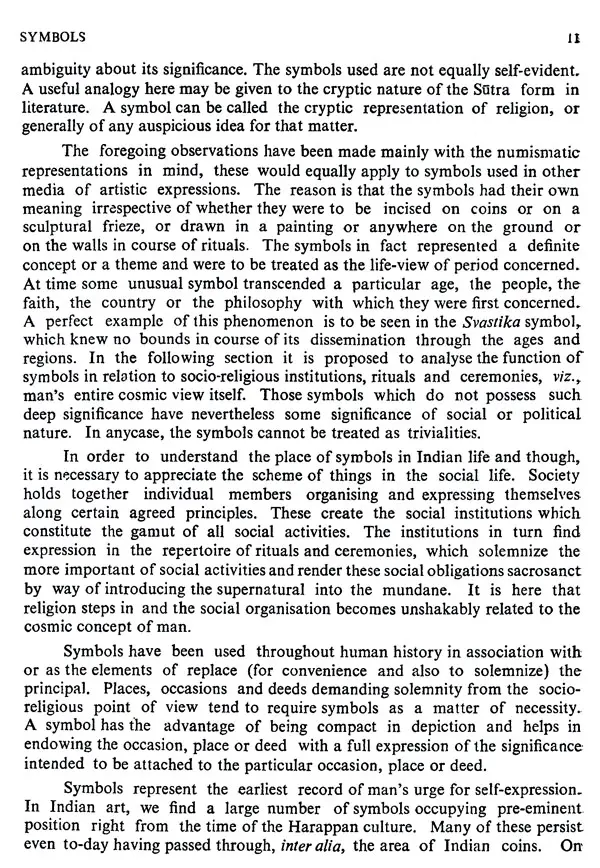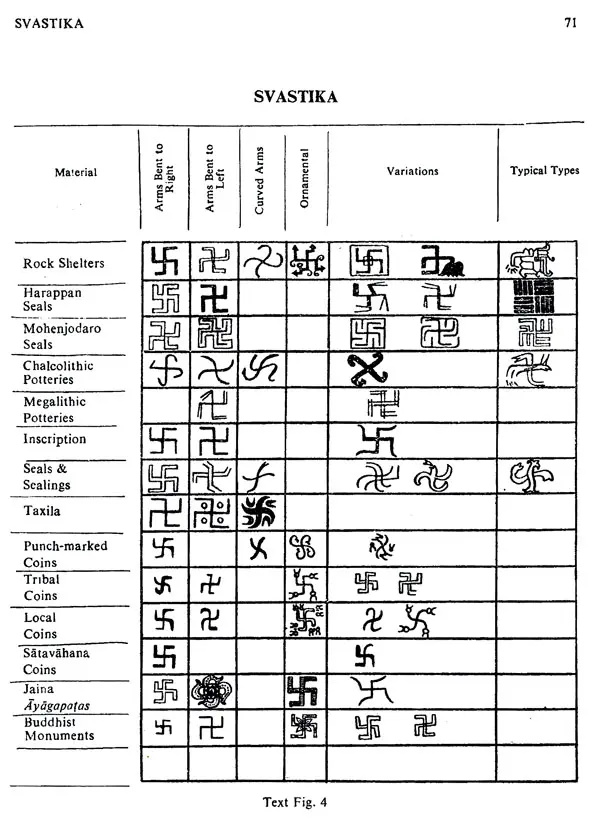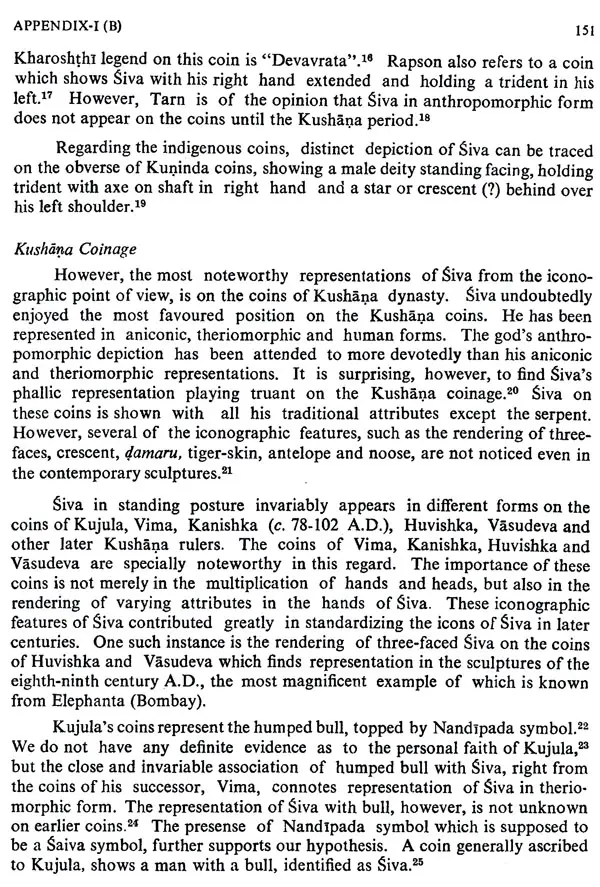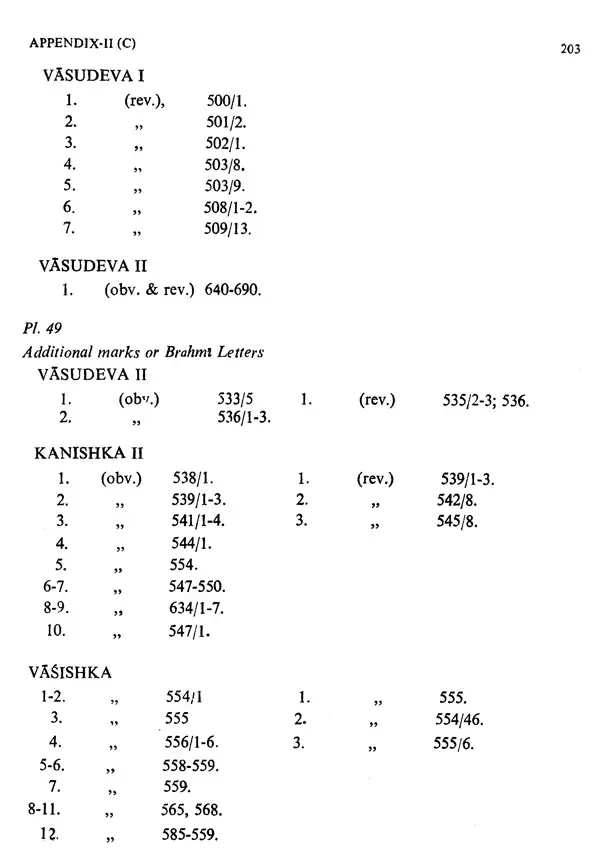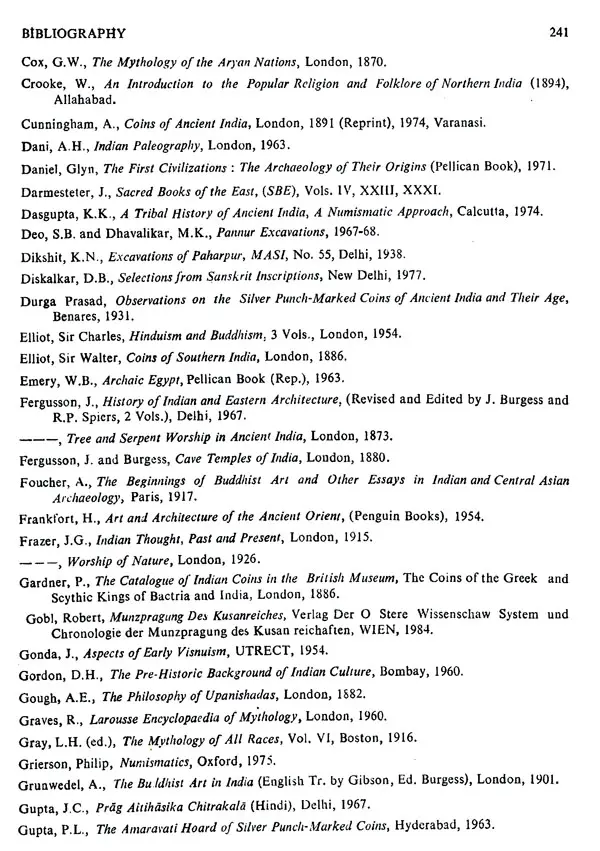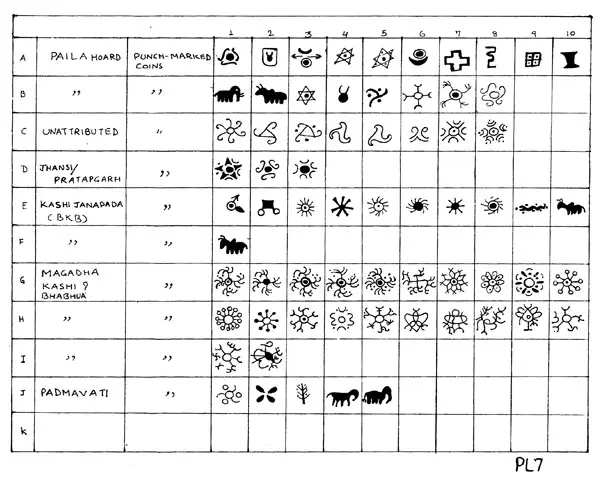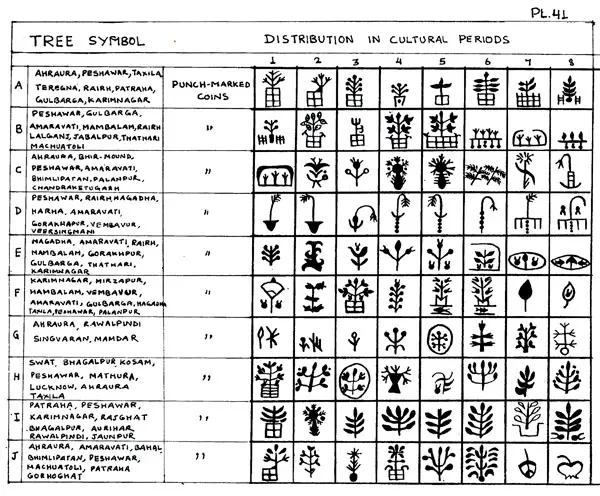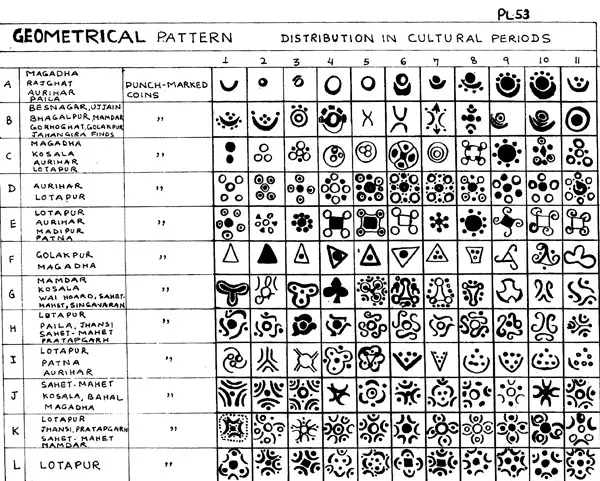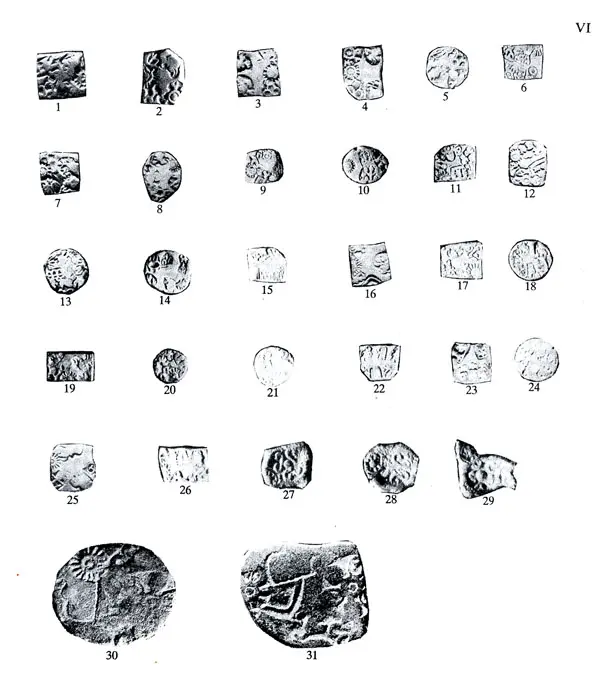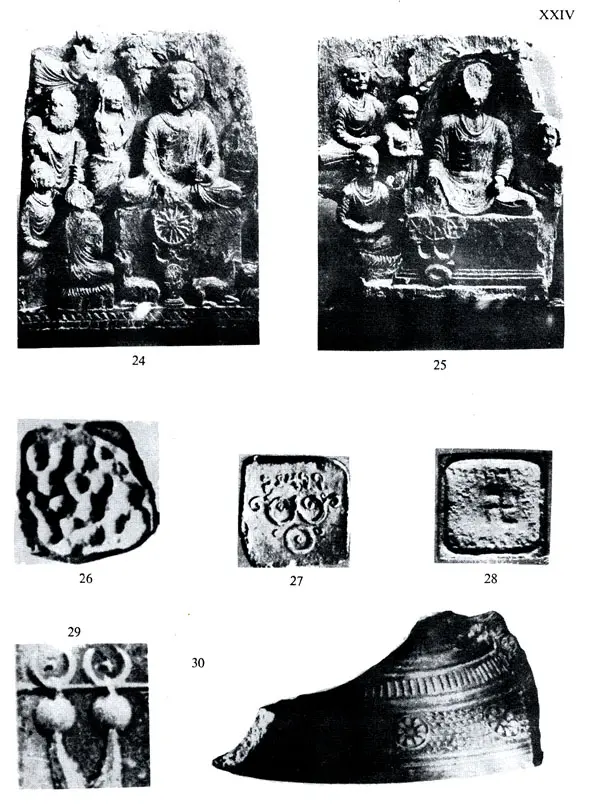
Early Indian Symbols
Book Specification
| Item Code: | UAP833 |
| Author: | Savita Sharma |
| Publisher: | Agam Kala Prakashan, Delhi |
| Language: | English |
| Edition: | 1990 |
| ISBN: | 9788173201851 |
| Pages: | 371 |
| Cover: | HARDCOVER |
| Other Details | 11.00 X 9.00 inch |
| Weight | 1.17 kg |
Book Description
In the Indian context, that symbols are usually assigned specific sectarian affiliations but the present study shows that it is not always was the symbols have different contextual meaning and transcendental character. And endeavor has been made in the book "Early Indian Symbols: Numismatic Evidences to make a detailed study and critical assessment of the origin and developments if some of the important symbols, such as Surya, Svastika, Chakra, Srivats etc.
While numismatic evidences have been thoroughly examined other archaeological materials and literary sources have also been referred to in support to the book. The development of forms of different symbols has been classified and show through charts and tables. The inclusion of some of the anthropomorphic forms of early Indian and foreign details has further added to the value of this book. In view of its scientific presentation based on intensive analysis, the book is an important and significant contribution in the field of Indian History and culture in all its wider ramifications.
The present book is the outcome of serious researches on one of the vital aspects of Indian Numismatics. All the drawing and charts. have been drawn and papered by the author himself.
The ancient civilizations of the world have revealed the role played by art and religion in interesting manners. The regional geography, flora and fauna, attitude of the people to life, the socio-economic set-up and the political vicissitudes have their impact on the cultures of different areas. The recent studies of several of these areas, in a chronological sequence have brought to light useful material bearing on the development of human civilization and the people of different regions.
Literary and archaeological sources, tradition and foreign accounts furnish valuable source-material for the study of ancient history and culture. Among the archaeological sources the value of coins, seals and sealing’s and minor art-objects has been recognized. Efforts are being made to utilize this evidence adequately. The present endeavor by Dr. Savita Sharma is a pointer to that direction.
While making a critical and chronological analysis of art and religion from the proto-historical times to the 3rd century A.D., the author had to encounter the changing political and cultural patterns in various regions of the country. Looking to the quantitative and variegated nature of the source material, sufficient care had to be taken in evaluating properly the nature and extent of religion and art during a long stretch of time. The author has succeeded in her objective and has given an authentic exposition of the subject matter. It is an exhaustive and brilliant study on Indian history.
Another compelling reason for undertaking this highly absorbing study was the way these symbols seemed to acquire and shed certain connotations as these spread from an age to another and likewise from a place to another. There seemed also a very vague and mystic character about these symbols which did command my attention at this stage. The present study, it may be remarked here, is an attempt to bring together all the connotations of these symbols heralded by their total environment and I should also invite the scholars of ancient Indian history and numismatics to appreciate the material compiled and commented upon in the present work as against the inherent limitations of any such study where clear definitions of particular symbols are not to be found.
In the long-drawn process of the evolution of civilization art and religion are found intermingled with each other from their genesis. These form the obverse and reverse of the coin of civilization, where the very origin, later identities, themes and inner experience are almost similar. Religion finds visual expression in the form of symbols to give a form to essentially an innate idea. An important visual expression of religion of a period is the symbols represented on different objects belonging to that period. This study particularly concentrates on the symbols found on coins for a systematic and detailed analysis of their significance, importance and representation in its historical context. Out of a large number of symbols available, we have studied the symbols Sürya, Chakra, Svastika, Srivatsa, Nandipada to mention a few. The sources of all the material relied upon for the present study also include, for the sake of benefit of comparison, symbols found on architectural monuments such as Stapas, Chaityas, Viharas, temples etc., symbols appearing with sculptures and icons in metal, in stone, in ivory, in terracotta, in paintings, on potteries, on jewelry and on minor art objects apart from the numismatic evidence on it of the period extending from the earliest times upto the 3rd century A.D.
**Contents and Sample Pages**
